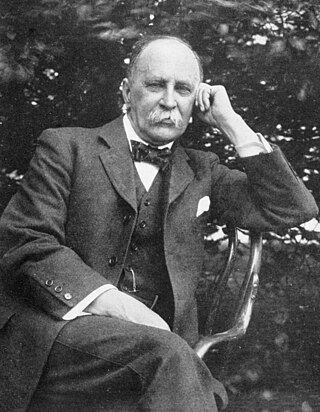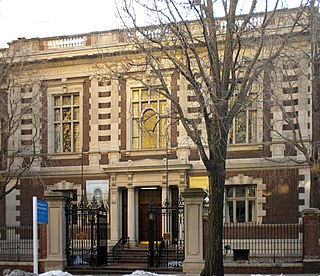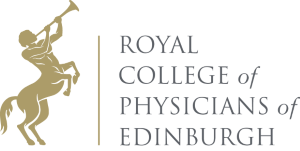
Sir William Osler, 1st Baronet, was a Canadian physician and one of the "Big Four" founding professors of Johns Hopkins Hospital. Osler created the first residency program for specialty training of physicians, and he was the first to bring medical students out of the lecture hall for bedside clinical training. He has frequently been described as the Father of Modern Medicine and one of the "greatest diagnosticians ever to wield a stethoscope". Osler was a person of many interests, who in addition to being a physician, was a bibliophile, historian, author, and renowned practical joker. Outside of medicine, he was passionate about medical libraries and medical history and among his achievements were the founding of the History of Medicine Society, at the Royal Society of Medicine, London. In the field of librarianship he was instrumental in founding the Medical Library Association of Great Britain and Ireland, the Association of Medical Librarians with three others, including Margaret Charlton, the medical librarian of his alma mater, McGill University. He left his large history of medicine library to McGill, where it continues to exist as the Osler Library.

Thomas Jefferson University is a private research university in Philadelphia, Pennsylvania. Established in its earliest form in 1824, the university officially combined with Philadelphia University in 2017. To signify its heritage, the university sometimes carries the nomenclature Jefferson in its branding. It is classified among "R2: Doctoral Universities – High research activity".

The Royal College of Physicians (RCP) is a British professional membership body dedicated to improving the practice of medicine, chiefly through the accreditation of physicians by examination. Founded by royal charter from King Henry VIII in 1518, as the College of Physicians, the RCP is the oldest medical college in England. It set the first international standard in the classification of diseases, and its library contains medical texts of great historical interest. The college is sometimes referred to as the Royal College of Physicians of London to differentiate it from other similarly named bodies.

The Royal College of Surgeons of England is an independent professional body and registered charity that promotes and advances standards of surgical care for patients, and regulates surgery and dentistry in England and Wales. The college is located at Lincoln's Inn Fields in London. It publishes multiple medical journals including the Annals of the Royal College of Surgeons of England, the Faculty Dental Journal, and the Bulletin of the Royal College of Surgeons of England.

Pennsylvania Hospital is a private, non-profit, 515-bed teaching hospital located in Center City Philadelphia and is part of the University of Pennsylvania Health System. Founded on May 11, 1751, by Benjamin Franklin and Dr. Thomas Bond, Pennsylvania Hospital is one of the earliest established public hospitals in the United States. It is also home to America's first surgical amphitheatre and its first medical library. The hospital's main building, dating to 1756, is a National Historic Landmark.

The Mütter Museum is a medical history and science museum located in the Center City area of Philadelphia, Pennsylvania. It contains a collection of anatomical and pathological specimens, wax models, and antique medical equipment. The museum is part of The College of Physicians of Philadelphia. The original purpose of the collection, donated by Dr. Thomas Dent Mütter on December 11th 1858, was for the education of both medical professionals and the public. The College of Physicians of Philadelphia is itself not a teaching organization, but rather a "scientific body dedicated to the advancement of science and medicine".

The Pennsylvania Academy of the Fine Arts (PAFA) is a museum and private art school in Philadelphia, Pennsylvania. It was founded in 1805 and is the first and oldest art museum and art school in the United States.

The Royal College of Physicians of Edinburgh (RCPE) is a medical royal college in Scotland. It is one of three organisations that sets the specialty training standards for physicians in the United Kingdom. It was established by Royal charter in 1681. The college has over 14,000 fellows and members worldwide.

The Wagner Free Institute of Science is a natural history museum at 1700 West Montgomery Avenue in north Philadelphia, Pennsylvania, United States. Founded in 1855, it is a rare surviving example of a Victorian era scientific society, with a museum, research center, library, and educational facilities. Its buildings, developed between 1859 and 1901, present the collections of founder William Wagner in the style of the period, and have been designated a National Historic Landmark for their architecture and state of preservation.
The Royal College of Physicians of Ireland (RCPI), is an Irish professional body dedicated to improving the practice of general medicine and related medical specialities, chiefly through the accreditation of physicians by examination.

The Egyptian Building is a historic college building in Richmond, Virginia, completed in 1845. It was the first permanent home of the Medical Department of Hampden-Sydney College and now is a part of Virginia Commonwealth University. It is considered by architectural scholars to be one of the finest surviving Egyptian Revival-style buildings in the nation. The Egyptian Building was added to the Virginia Landmarks Register on November 5, 1968, the National Register of Historic Places on April 16, 1969, and finally designated as a National Historic Landmark on November 11, 1971.

The University of Pennsylvania Campus Historic District is a historic district on the campus of the University of Pennsylvania, in Philadelphia, Pennsylvania, USA. The university relocated from Center City to West Philadelphia in the 1870s, and its oldest buildings date from that period. The Historic District was added to the National Register of Historic Places on December 28, 1978.
The Royal Australasian College of Physicians (RACP) is a not-for-profit professional organisation responsible for training and educating physicians and paediatricians across Australia and New Zealand.
Drexel University College of Medicine is the medical school of Drexel University, a private research university in Philadelphia, Pennsylvania. The medical school represents the consolidation of two medical schools: Hahnemann Medical College, originally founded as the nation's first college of homeopathy, and the Woman's Medical College of Pennsylvania, the first U.S. medical school for women, which became the Medical College of Pennsylvania when it admitted men in 1970; these institutions merged together in 1993, became affiliated with Drexel University College of Medicine in 1998, and were fully absorbed into the university in 2002.

The Army Medical Museum and Library (AMML) of the U.S. Army was a large brick building constructed in 1887 at South B Street and 7th Street, SW, Washington, D.C., which is directly on the National Mall. It was designated a National Historic Landmark in 1965 and added to the National Register of Historic Places in 1966. The building was demolished in 1969, and the collections at the focus of the landmark designation were dispersed.
The Temple University School of Podiatric Medicine is a podiatric medical school associated with Temple University in Philadelphia, Pennsylvania. The school is located at 8th and Race Streets in downtown Philadelphia. The school was founded in 1963 as the Pennsylvania College of Podiatric Medicine (PCPM). The school runs the Foot and Ankle Institute, the largest podiatric medical clinic in Philadelphia.

The Boston Medical Library of Boston, Massachusetts, was originally organized to alleviate the problem that had emerged due to the scattered distribution of medical texts throughout the city. It has evolved into the "largest academic medical library in the world".

Simon Baruch was a physician, scholar, and the foremost advocate of the urban public bathhouse to benefit public health in the United States.

Horace Jayne House (1895) is an architecturally significant building designed by architect Frank Furness in Philadelphia, Pennsylvania. It is located at the southwest corner of 19th and Delancey Streets, about a block south of Rittenhouse Square.
























